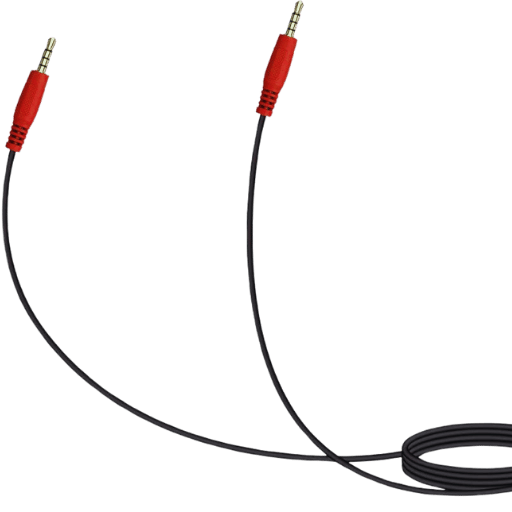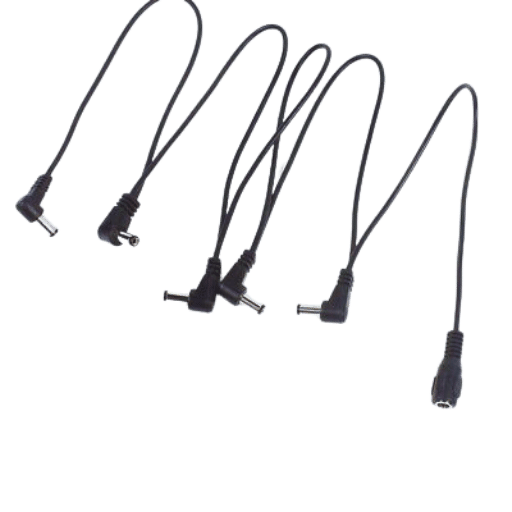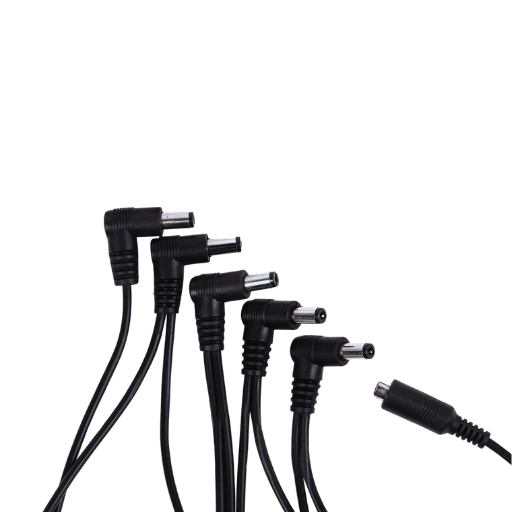In the contemporary age, most physical networking and electronic systems use daisy chain cables. This particular guide seeks to assist the reader in getting a more comprehensive idea of daisy chain cables and their uses, advantages, and disadvantages. After reading this article, the readers will know how to put into practice the daisy chain approach and troubleshoot problems arising from its use in various situations. The guide seeks to cover all categories of users, either a pro or a beginner, and ensure complete comprehension of every detail about daisy chain cables.

It is a type of interconnection scheme whereby several components are arranged in a line similar to daisy chains. Each device is linked with the following implementing a common transmission path for either data or electric signals. In such arrangements the output signal of this device is fed directly to the input routers of the device which comes next in series. This approach finds its applications in numerous fields such as computer networking, audio-video and industrial systems.
A daisy chain topology can either be in a linear or a ringed network configuration. In linear daisy chain configuration, the data moves from the first device to the last device with no possibility of going back to the first device. This is different from circular daisy chains or ring topology in which configuration data can circle more than once but only in one direction. Factors like total number of connected devices and the length of the daisy chain can be significant to signal loss and lag. Proper terminations at the end of the daisy chains are important in quite a number of ways, including preventing loss of signal strength and ensuring efficient transmission between the devices joined.
The different rates of data transmission, the predicted losses in a signal, and the practical length of any installations in a daisy chain configuration are subject to the particular protocols and standards in use. To illustrate, RS-485 standard is well-known to the industrial communication networks as it allows daisy chaining with maximum cable length reaching up to 4000 feet and supporting data transmission rates of up to 10 Mbps. This understanding is essential in the design of standard and effective daisy chain setups.
Daisy chain cables are increasingly being adopted in many applications due to their effectiveness and ease of connection. In the case of computer networking, for example, these are often employed to connect many peripheral devices, such as printers or storage devices, to a single personal computer, thereby eliminating the number of component input/output ports that are required. In such audio-visual systems, daisy-chaining is also used to connect several speakers, displays, or other AV components in a chain so that they can communicate with each other and so that the amount of cable used is minimized. In industrial control systems also, a daisy chain configuration is effectively used, which involves connecting several sensors and actuators in a chain in order to facilitate data transport within manufacture and automation. No matter the application, daisy chaining always stands out because its simplicity, in addition to its scalability, is a very good method for connecting several devices.
In power supply systems, daisy chaining occurs when many devices are interconnected in series where each device is connected to the previously powered device. Every system has a power supply unit (PSU), which passes its electricity to the first unit in line, and the first unit pass power to the second unit, same applies to subsequent units. This system is widely used for instance in a number of lights mounted on walls or in other aspects where civil wiring needs to be kept light, thus LEDs are connected in daisy chain with a voltage regulator controlling the amount of voltage across to the string. Nonetheless, one must be cautious so that they may not load the available supply more than its limit since the combined current rating of the chain riveters cannot go beyond the scope limit of the PSU. Electrical appliances consist of power cables, and powering them in a daisy-chaining way requires proper strategy and careful consideration of electrical regulations.

Another crucial point to consider is length and quality, particularly in preparation for the daisy chain power cable selection. The length of the cable must be properly determined based on the stipulations of the application to prevent excessive voltage drop and any form of power loss. Under the American Wire Gauge (AWG) standard, voltages tend to drop with an increase in cable length, whereby thicker wire is needed; for example, a 20- foot cable made of 14 AWG can carry a current of 15 amps without too much power loss as when making a longer cable that will require to use 12 AWG for the same amount of load.
Another point is that the quality of the cable is also important. Modern cables of this standard do not contain aluminum-coated copper conductors, as these have higher resistance than pure copper cores. Kept the wires at a quarter length, we were able to draw insights regarding the existence of low-temperature co-cured polyvinyl chloride and other plastics for forest usage. The risks possessed by such devices can be averted by high-quality cables. Investing in these top quality cables guarantees the right power supply of heavy duty devices and improves safety towards the devices and their connecters. That leads us to the conclusion that both length and quality should be given consideration during design in the individual daisy chain power supply configuration.
In comparing Rockboard Flat Daisy Chain cables to regular cables, several technical factors need to be considered, for instance, design, flexibility and performance.
The variations in performance and construction can also be attributed to their design traits since Rockboard Flat Daisy Chain cables, being low-profile, are less bulky and require less management especially in confined areas. This flat construction enables less tangling and better flexibility, which is important in cases where there are many connections that require regard towards the layout.
However, in advanced designs and vertical systems, for example, the regular cables are round in outlines, these cables are likely to offer lesser flexibility and tend to get wrapped up, which may in turn cause difficulties in cable management. Also, the flat shaped cables also helps in reducing the amount of noise interference through the narrow bun of the conductor parallel plane.
As for performance, both types can be made from the best of materials but in most cases, the Rockboard Flat Daisy Chain cables usually requires more than that to include factors like enhanced shielding, more quality connectors in order to enhance it or the system in general.
To conclude, despite the fact that Rockboard Flat Daisy Chain and ordinary cables are both productive, the former possess distinct benefits where size, performance, flexibility and interference design are essential hence can be used for complex configurations even in limited areas.
Also, right-angle daisy chain cables control excess space usage and improve space system cabling in complicated installations. It also incorporates designs that provide cables and connectors at right angles thus relieving connector cable stress and increasing cable and connector lifespan. This nature of the 90-degree design is also suited where there are space constraints as it makes the most out of space available and discourages messiness and tangling of wires.
Moreover, such cables at right angles daisykid chain ow various degrees of motion, thus making them applicable in applications wherein short or oddly shaped cable runs are required. They also assist in keeping the wiring schematics neat erasing the looks of untidiness and preserving aesthetics as well as smooth operation of the systems by easing troubleshooting and maintenance. Moreover, the sturdy structure found in most, if not all, of the high quality right angle cables guarantees clean, constant signals thus reducing accidental disruptions hence improved efficiency.
In short, right angle daisy chain cables play an important role in the professional’s toolkit and in complicated installations offering utmost gain in spatial structure, degree construction, cable reliability and well arrangement.

Providers of effect pedals can easily interconnect with one another, provided they offer the same polarity type and supply voltage. Limitations are often imposed by the physical design of a power supply which limits how many individual pedals can be connected and receive sufficient current. When the power ratings of all pedals in the chain are adhered to, damage to the pedals may be prevented, including performance problems. Also, properly psychopathological cables and connectors should be used to preserve the quality of the signal and cut the noise level down.
When using a 9V adapter to power different pedals in a daisy chain connection, it is important to check the voltage level for each of the pedals that they are rated for 9 Volts. Then, check that the current rating of the daisy chain is greater or equal to the current requirements of all pedals in the daisy chain. To eliminate ground noise and allow greater performance, an isolated power supply is recommended. Whenever using a 9V adapter of good quality, good current is supplied to the chips, which results in a good performance, unlike damaging the chips because of power fluctuations.
There are different systematic approaches you can adopt in case you encounter a problem or a fault in respect to your pedal board:
By working through these and other areas of pedal board preservation management, most pedal board problems can be addressed for performance and reliability reasons.

Here are some of the ways you can prevent ground loop issues:
All the above measures can help you eliminate ground loop problems in your pedal board.
Good pedalboard placement is necessary to get the best sound and usability from the pedals used. A few tips for you to:
Following these steps helps to optimize your pedal board for better performance as well as comfort.
Besides its reliability and longevity, proper care of daisy chains is vital for their maintenance. Here are just a few pointers.
In this manner, you can enhance the service lifetime on the daisy chain power cable and also have a reliable and silent configuration for your pedal board.

Because of its great reliability and efficiency, the Boss PCS-20A Parallel DC is a one-power daisy chain power cable that comes highly recommended. Due to having more than one connector designed to power a number of pedals simultaneously, the pedal block is also able to power on consistently with very little interference. The wire is made of some strong material, decreasing the danger of damage over time. At the same time, the Boss PCS-20A has very tight connections, which help reduce losses of seapower and use interruptions. For House plays or for any sound art purpose it is a perfect choice since it has a large network of pedals.
Truetone 1 SPOT Multi-Plug 5 Cable
Donner DPA-1 Pedal Power Adapter Daisy Chain
Voodoo Lab PPAV Cable
JOYO JF-18 Power Supply Adapter with Daisy Chain
CBI Cables DCP-5 Daisy Chain
So any of these top 5-way daisy chain cables will absolutely assure you of a stable and noiseless power connection for your pedal board setup.
Picking the right extension cable especially while setting up your pedalboard is very important in terms of increasing the functionality and the range of the setup. The very best extension cables that these reputable sources recommend for their strength, performance, and extendability daisy chain configuration are:
Hosa CMM-830 Stereo Interconnect Cable
Mogami Gold Instrument Cable
Planet Waves Classic Series Patch Cable
Purchasing any of these extension cables can, therefore, make the daisy chain construction more efficient and dependable, aiding in the smooth flow of power and avoiding the generation of extra noise.
A: The daisy chain cable, also referred to as a power cord or multi-plug, is a power supply type of adapter cable which is used to power several pieces of equipment from the same supply. This is done by connecting different devices in a daisy chain cut by each device being powered by the one that comes before it. This arrangement is especially effective in providing power to many effect pedals on a pedal board from a single 9V DC adapter.
A: A daisy chain cable for your pedal board has several advantages 1. It cuts back on the number of wires that scatter across when there is no adequate distribution of power supplies 2. It Is cheaper than purchasing power supplies for each pedal. 3. It makes your setup very portable and easy to set up because there are very few pedals on the board with encumbering wires on them 4. Most daisy chain cables are built like instrument cables, so they are not easy to destroy.
A: The allowable number of pedals connected with a daisy chain cable to a single power supply will depend on the model in question and the power supply itself. Popular configurations usually include 5 connectors, 8 plugs, and sometimes even 10 plug daisy chains. For instance, one can use the PSA800 8-plug daisy chain to power as many as 8 pedals, while the PC10 PowerChain10 daisy chain power cable can power up to 10 pedals. However, remember to always calculate the total current consumption of your pedals in order to power only those devices that your power supply unit can handle.
A: In this regard, a daisy chain cable should only be used on pedals with the same voltage requirements, generally 9volts DC pedals. It is because of such danger that it is not advisable to use daisy chain pedals that have differing voltage requirements. Because equipment will be daisy chained, pedals with different voltage requirements should either be used with an isolated power supply or use a voltage converter output along with the daisy chain inlet.
A: A splitter cable, which is also referred to as a parallel DC cord, includes components that function to fulfill a similar role as a daisy chain but have fewer connectors and power lines that operate in parallel and not in series. In simple terms, this means that while a daisy chain cable connects pedals as if they are in series, a splitter makes it easier in that it connects from the output of the power source directly to each of the pedals instead of chaining them. Splitter cables have limited usefulness since they are meant for powering only a small number of pedals or in some cases, used together with daisy chains to give rise to larger configurations.
A: In conclusion, there are various risks associated with using daisy chains. While this is so, in most cases, techs do come across a few risks that are worth noting. 1. Due to improper isolating of pedals, noise or interference may sometimes result. 2. The power supply may, at times, be overworked, which may result in the destruction of your pedals or power supply. 3. Plugging different power pedals into the same chain may provide undesirable results. These risks may be avoided by checking the power demands of your pedals and using the right quality pedal board cables.
A: When buying a daisy chain cable kit, be sure to attend to the following points: 1. Number of connectors (usually 5 Connectors & 8 plug or 10 plug options) 2. Length of cable as well as the distance between plugs 3. Suppose it fits into your power adapter (quite mandatory 9v dc adapter) 4. Assembly quality and robustness in general 5. Supplementary options include surface-mounted components such as connectors or reverse polarity protections 6. Brand perception – (some options are Voodoo Lab Power-All and OneSpot, which are quite popular).
A: Daisy chain cables are generally meant to be used with pedals powered through a power supply. However, in the case of battery-powered pedals, there is hope that it is possible to use a system battery clip jumper cable to connect to your daisy chain. Check with your pedals user’s manual first before proceeding.